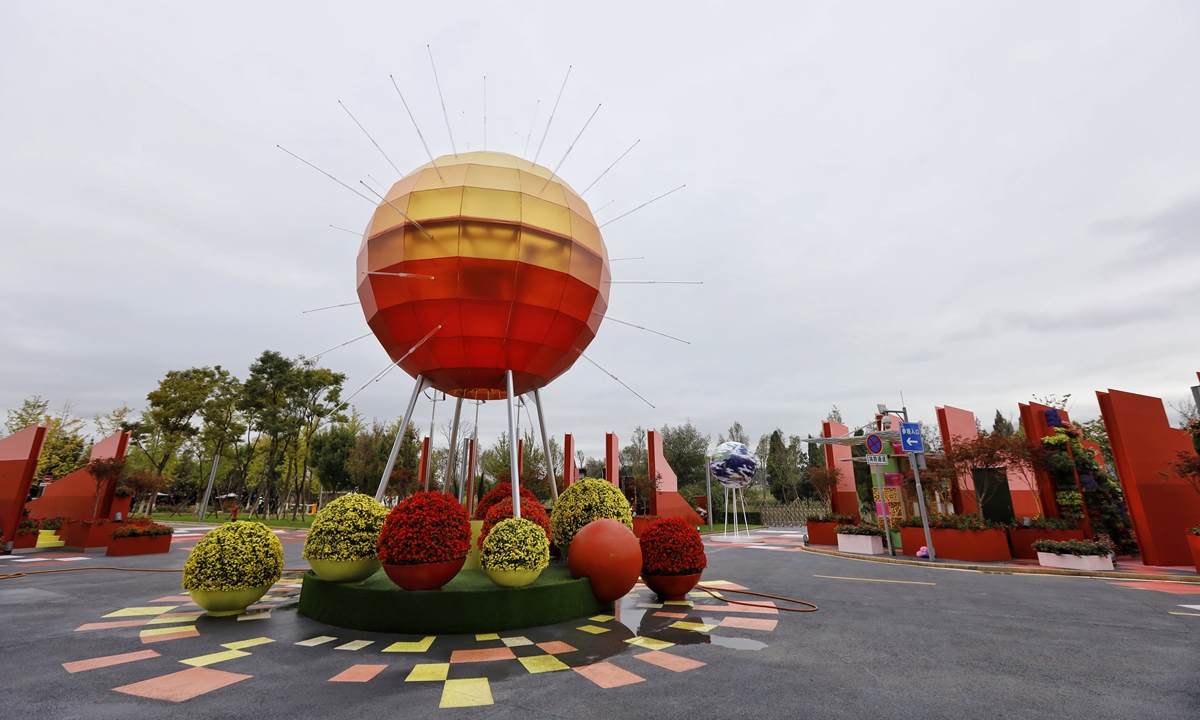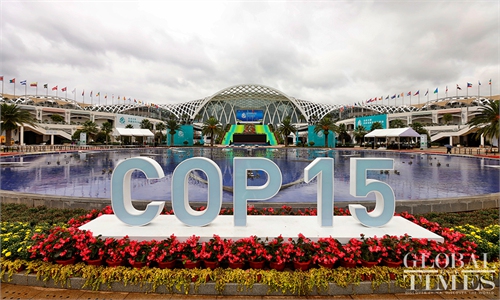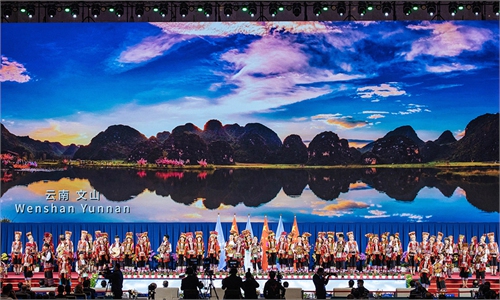
The Nature and the City art installation by UK architect and designer Laurie Chetwood in Kunming, Southwest China's Yunnan Province. Photo: Li Hao/GT
As government officials from around the world hold talks at the UN biodiversity conference COP15 in Kunming, Southwest China's Yunnan Province, a new art installation, Nature and the City, set up in the city's planning museum, is reminding the public that everyone can do their part to protect nature, not just the governments.
"Everybody can take part - whether it's in their own garden or a city building," UK architect and designer Laurie Chetwood told the Global Times on Monday. "You should be able to think more laterally now and think how can I provide a habitat for living things? How can I make things easier? Can we deal with the air better? Can we make sure people live longer?"
The sun and five gardens
The latest work from Chetwood centers around a sphere which represents the sun as the source of life on earth, and includes five gardens representing five key biodiversity themes - "things that human beings and everything need to keep alive or to stay alive: water, food, shelter, air and sleep. "
Each garden is divided by fins which, at their highest, epitomize the city and demonstrate how nature can exist in harmony with urban life. As the gardens and some of the plants radiate from the center of the Sun Plaza, the urban nature of the design becomes more natural and less urban.
The project is meant to demonstrate how nature, mankind and all living things can exist together, especially in cities. "It's almost an opportunity missed in the city," he added. "There are many things the city can do to make biodiversity work better, including the food garden."
In London, there are only four days' worth of food. If the food stops coming into the city, that means that "people start starving." The food garden shows how food can be provided on vertical and horizontal surfaces in the city to encourage food production locally.
"Trying to bring food in locally, providing food for insects and birds, green walls and starting using the fabric... I would call that the duality of purpose, which is trying to make things do two things rather than just one," noted Chetwood, who is known for his past experimental environmental designs, including Butterfly House, inspired by the life cycle of a butterfly.
Embrace new tech, ideas
Chetwood also worked on two other Chinese-themed gardens - the RHS Chelsea Flower Show and the Chengdu Silk Road Garden - and the Chengdu garden was inspired by the rich history and culture of Chengdu, capital of the ancient Shu kingdom in Southwest China.
In his eyes, working with Chinese always gives him a chance for new ideas, and "Chinese people most likely embrace new, good ideas with enthusiasm."
"In China there is also a desire to embrace the latest technology. Putting those two things together with an optimistic view, China has a huge potential in biodiversity protection," he added.



